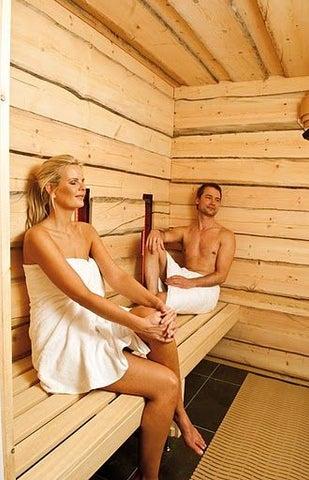Traditional Sauna Fundamentals Explained
Traditional Sauna Fundamentals Explained
Blog Article
All About Traditional Sauna
Table of ContentsThe Definitive Guide for Traditional SaunaThe 9-Second Trick For Traditional SaunaThe 3-Minute Rule for Traditional SaunaSome Known Facts About Traditional Sauna.Some Known Facts About Traditional Sauna.
A lot of the weight shed in a sauna is water loss and is re-gained upon rehydrating. Without a doubt sauna can be a crucial part of a healthy weight loss program. To look at the differences between traditional and IR saunas, I will separate these right into proven, academic, and made distinctions.Thus, the best point in the saunawhich goes to the ceiling straight over the sauna heateris normally between 185 and 190 F. Claims that a standard sauna goes beyond 200 F is just not true and not appropriate for electrical saunas sold in the US. The temperature for a far-infrared sauna is generally set in between 120 and 140 F; however, unlike the typical sauna, the goal in and IR space is not to attain a heat.
As a result of this, the temperature level difference is virtually pointless, considering that extreme sweating results in both sauna kinds, however the technique of warming the body is various. In an IR sauna the bather will certainly really feel hot and will certainly sweat a lot, however at a lot reduced temperatures. Traditional Sauna. Thus, if the objective is to spend longer time periods in the sauna, the IR sauna is a great choice

The 15-Second Trick For Traditional Sauna

When the high temperature is accomplished, the elements cycle on and off to preserve the high temperature level. Traditional Sauna. A lot of typical sauna users take pleasure in pouring water over the rocks to develop heavy steam to increase sauna moisture levels. The advantages of putting water over the rocks include: making the area much more comfortable, moistening the nasal flows, and permitting the use of aromatherapy by mixing essential oils with the water
In a far-infrared sauna, the warm waves penetrate the body to successfully heat the body and raise the body core temperature. To accomplish this increased temperature level, Far-infrared emitters create infrared power which is close to the exact same wavelength as that which the body naturally emitsoften referred to go to the website as the "Important Range" of 7 to 14 microns), so the energy is well received by the body.
When the power goes into the body, it triggers the body temperature to enhance and ultimately results in perspiration. In an infrared sauna it is essential for the emitters/heaters to remain on almost constantly. Since there is no mass of rocks to preserve warmth, the sauna will certainly cool if the emitters shut down.
Not known Details About Traditional Sauna
As pointed out above, the sauna bather in an infrared area wishes to place himself in front of running emitters to get optimal gain from the warmth. The heating time for both spaces can be very various, depending on just how the areas are used. For a traditional sauna, a visit this website bather must allow 30-40 mins for the room to accomplish a desired temperature and to correctly pre-heat the rocks.
A well built sauna will commonly achieve a temperature of 150-160 F in regarding 30-40 mins. For hotter temperatures, the room may require to warmth for a longer period.

Traditional saunas tend to be bigger (therefore make use of even more electrical energy) than infrared saunas, although standard saunas are definitely offered in one and 2 individual sizes also. For a two-person typical sauna, 5x6 or 5x7 dimension is most prominent. The leading bench can pleasantly seat 2 or three individuals and is likewise long enough to relax throughout the sauna session.
Not known Incorrect Statements About Traditional Sauna
The typical cost per kWH of electrical energy in the U.S. is about $0.11 - Traditional Sauna, so a 4.5 kW heating system will cost about $.50 to run for one hour, if the heating system runs continuously for one hour. Commonly a sauna heater will certainly compete 75% of the very first hour and 50% of succeeding hours on since the aspects cycle once the established temperature is accomplished
A 2 person far-infrared room is normally literally smaller than a typical sauna, frequently regarding 4' x 4' or smaller sized. The IR heating system is generally 1.5-1.7 kW making use of a 120 volt 15 amp plug-in service. Given that the space can be utilized earlier than a sauna space, we will assume you can try this out the area is utilized for to of an hour consisting of heat up time.
There is a hardly ever discussed difference in the social experience between the two rooms. While our culture has lost a few of the social benefit of the conventional sauna experience, it can be extremely socially fulfilling. From family time in the sauna, to heart-felt conversations with considerable others, to sauna partiesthe typical sauna experience can bring about intimate socializing.
The 45-Second Trick For Traditional Sauna
The majority of greater end infrared rooms consist of colored light treatment, noise systems and full-glass fronts.
Report this page